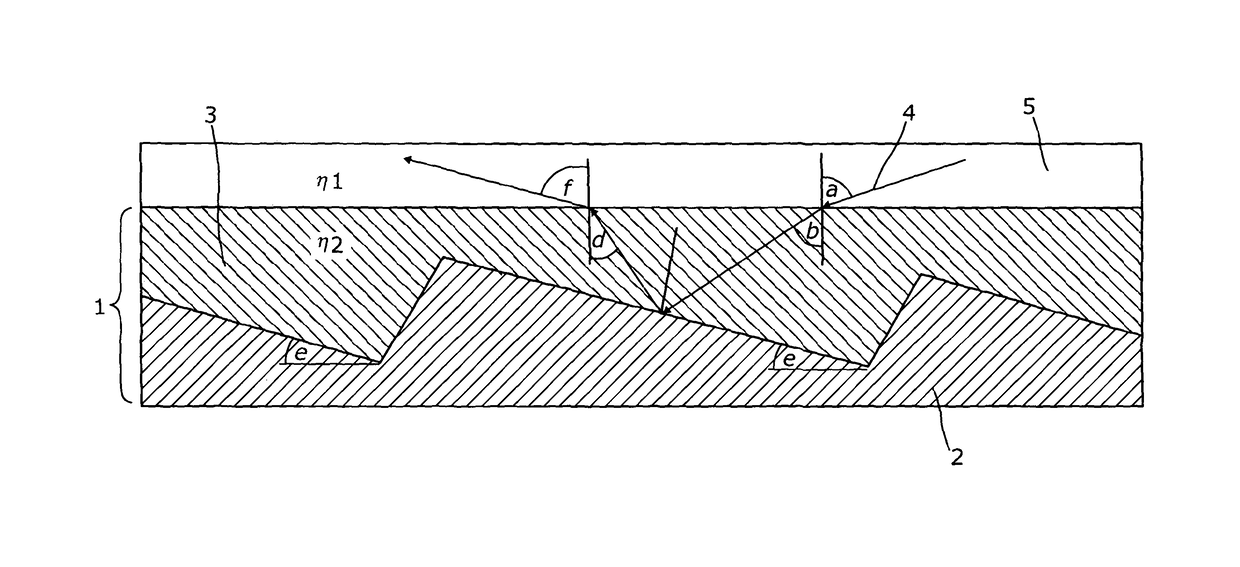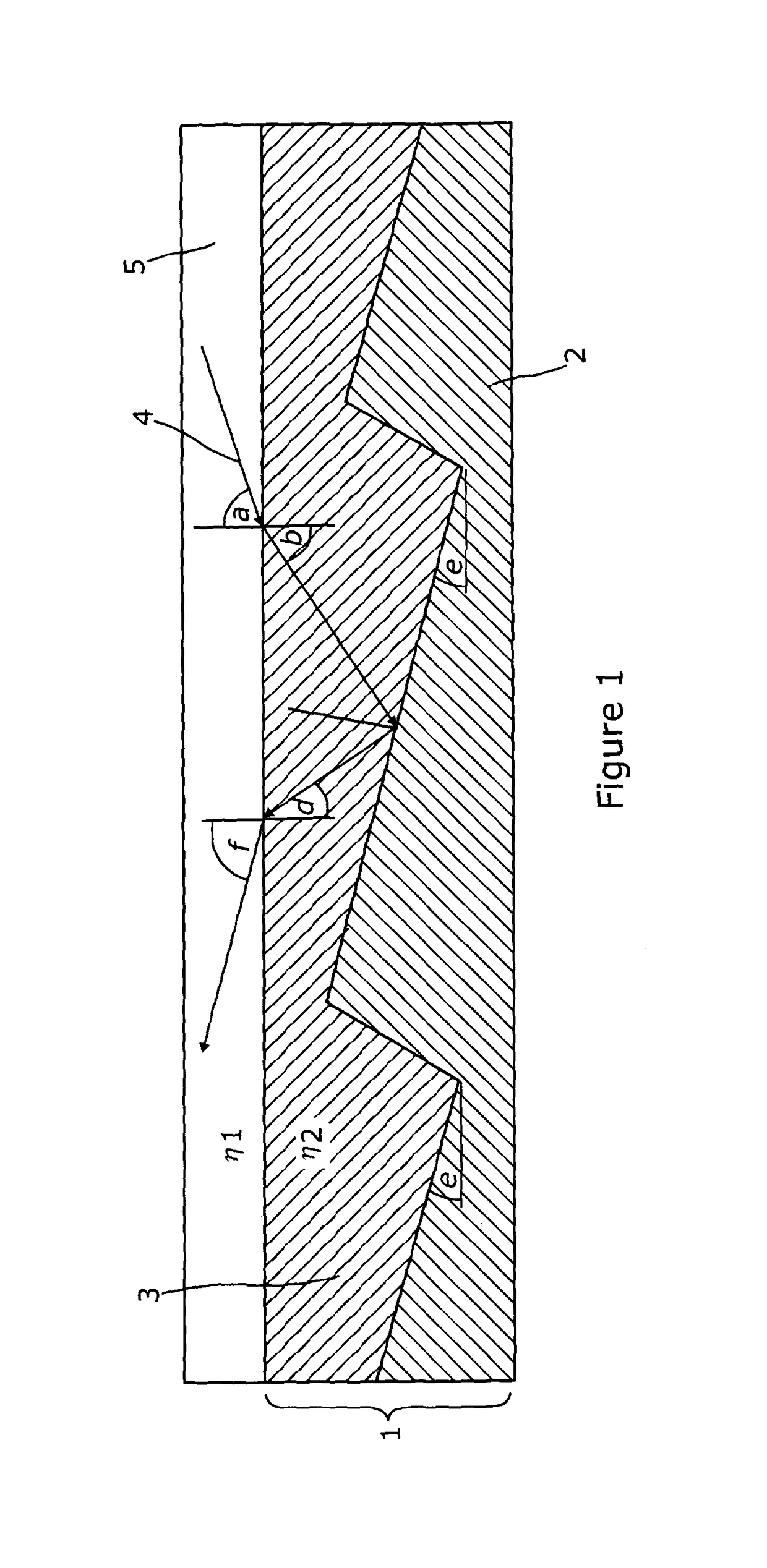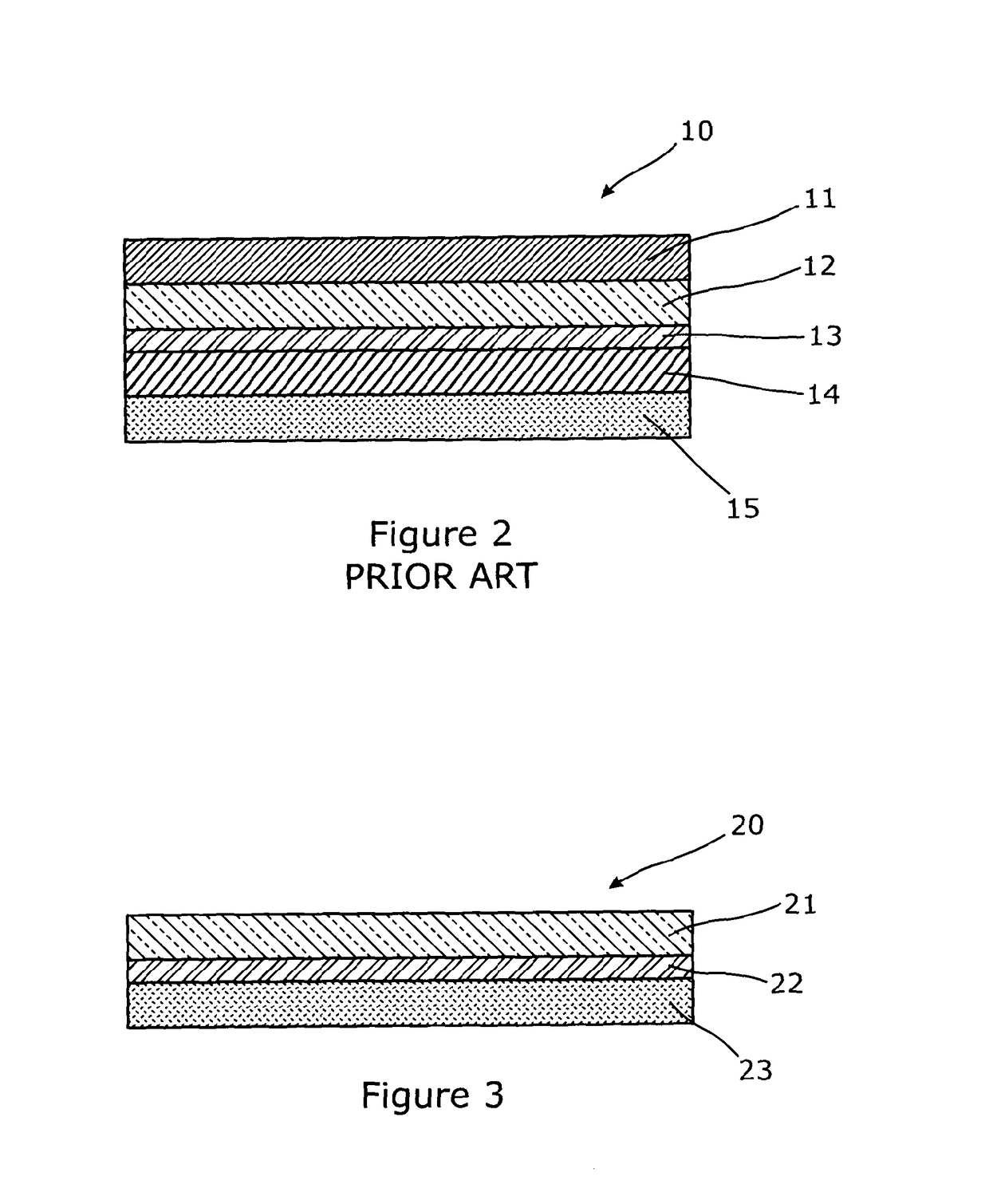Infrared transparent film
- Summary
- Abstract
- Description
- Claims
- Application Information
AI Technical Summary
Benefits of technology
Problems solved by technology
Method used
Image
Examples
example 1
[0100]A Beige coloured infrared transparent film was provided by mixing a 2:1 blend of Masterbatch with Ipethene® 320 (LDPE) as follows:[0101]Masterbatch / Ipethene 320 blend at 92% by mass[0102]UVR95 UV stabiliser at 5% by mass[0103]AR2435 Desiccant @ 3% mass
[0104]This resulted in a pigment loading of ˜7.4%.
[0105]The Masterbatch is an approximately 8% wt / wt blend of zinc sulphide, cadmium sulphide (CI Pigment Yellow 35), cadmium sulphoselenide (CI Pigment Red 108) and barium sulphate (CI Pigment White 21).
[0106]After blending, the masterbatch was blown to form a 50 micron lay-flat film.
[0107]In general, the mixture of pigments can be selected to provide a particular colour. In turn, the colour is selected based on the application and / or the field of use. A bright colour is typically selected for high visibility and / or detection. For low visibility and / or camouflage, the colour is typically chosen to match the background.
example 2
[0108]A coloured, infrared transparent material suitable for use in an identification device was fabricated by applying a vapour deposited, 100 nm layer of aluminium to the coloured polymer film described in Example 1. A pressure sensitive adhesive was then applied to the aluminium layer, followed by a backing paper.
example 3
[0109]A thin film, thermally reflective material suitable for use in an identification device was fabricated by co-extruding the film layer described in Example 1 with a 100 micron thick polyethylene terephthalate (PET) layer with a 50 micron deep sawtooth texture formed in UV cured acrylic resin (14° major facet angle, 84° minor facet angle, 82° apex angle) coated with a 100 nm layer aluminium, thereby producing a thermally reflective directional reflector having a non-conformal coating. A pressure sensitive adhesive was subsequently applied to the PET surface opposite the colour layer followed by a backing paper.
[0110]The SEM of FIG. 7a shows the material.
PUM
 Login to View More
Login to View More Abstract
Description
Claims
Application Information
 Login to View More
Login to View More - R&D
- Intellectual Property
- Life Sciences
- Materials
- Tech Scout
- Unparalleled Data Quality
- Higher Quality Content
- 60% Fewer Hallucinations
Browse by: Latest US Patents, China's latest patents, Technical Efficacy Thesaurus, Application Domain, Technology Topic, Popular Technical Reports.
© 2025 PatSnap. All rights reserved.Legal|Privacy policy|Modern Slavery Act Transparency Statement|Sitemap|About US| Contact US: help@patsnap.com



